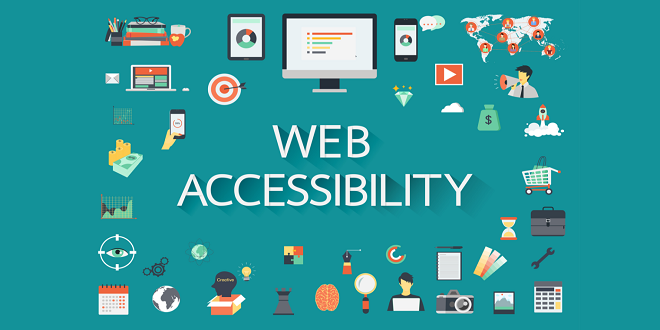
Introduction
Tim Berners Lee developed the first HTML (hypertext markup language) Web browser/editor in 1990 to enable scientists at the CERN particle physics lab in Switzerland to share electronic documents on a wide range of computing systems. At the heart of the design of HTML, technologies is the concept of interoperability, the ability to provide and receive electronic documents using public standards for creating, serving, and viewing the information on a wide variety of computing equipment.
In the beginning, the focus was on the information. Users typically had a wide range of choices and control over the rendering of Web documents. Authors were not very interested in controlling the rendering of HTML and indeed HTML has limited features for absolute control over rendering
Digital divide
DIGITAL DIVIDE The divide between people with visual impairments and able-bodied Web users was investigated by Penrice-Coyne and Nielsen. They found that people who use screen magnification technologies could only complete Web tasks about 21% of the time and people using speech output about 12.5% of the time.
Alternative Views of the web
For the Web to become more accessible to people with disabilities Web authors need to understand that people will be viewing their resources through many different renderings, including graphical, text, and speech. This section outlines the technologies people with disabilities use to access the Web, including the rendering options of popular Web browsers and specialized technologies designed specifically for people with disabilities.
KEYBOARD SUPPORT
Applications written for Microsoft Windows typically have very good keyboard support in contrast to applications written for Apple Macintosh and the various flavors of the UNIX X-Windows systems. This generalization is also applicable to browsers.
Access to text descriptions
One of the most important configuration options is the ability to render text descriptions for images. HTML has two attributes of the IMG element that can be used to provide text descriptions, the ALT attribute for short descriptions and the LONGDESC attribute for providing a link to a longer description. Most graphical browsers render ALT text content in place of an image when the browser is configured to not render images, but the quality of the rendering varies considerably among current browser technology.
User styling of text
People with visual impairments and learning disabilities that affect reading need to control the font characteristics, font size, and foreground and background colors of text. In early graphical browsers, like NCSA Mosaic, this was a built-in feature and the user could completely configure the default style sheet used for rendering HTML. Current browsers vary widely in their ability to allow the user to control the rendering of text.
Speech browsing
Speech browsing is a fundamentally different way of accessing Web information. In a graphical rendering, the author often uses spatial relationships to group information on the screen and the users passively scan the screen to identify the grouping of information.
However, a speech rendering is temporal and requires the user to issue commands to direct the browser to read and reread content.
The user could issue a command to speak the entire content of a Web page, but in general, this is an inefficient way for the user to locate the information they are interested in. It is the equivalent of a sighted user reading the entire contents of a Web page before they started looking for links or other groupings of information on the page
Web design guidelines
The W3C Web Content Accessibility Guidelines and the U.S. Government Section 508 regulations for Electronic and Information Technology Accessibility Standards (Access Board, 2000) are the most widely used Web design requirements for designing or repairing Web resources to be more accessible. The W3C Guidelines were designed from the perspective of the needs of people with disabilities and were a public and consensus-based process.
The Section 508 Web requirements were based on a need of the U.S. Federal Government to define Web accessibility standards that they felt were achievable and verifiable given the current state of disability access to the Web and the limitations of industry understanding of how to support the accessibility of web resources by people with disabilities. The Section 508 requirements were loosely based on the Priority 1 requirements of the W3C Guidelines, so the requirements are similar at that level.
Last word
The guidelines are organized into logical groupings of requirements. The document was developed on the notion of HTML and CSS technologies, but the accessibility requirements were intentionally designed to be more generic to allow the requirements to be applied to other W3C and non-W3C technologies as they became available. The WCAG requirements do not have the specificity of requirements for HTML defined in the Section 508 Web accessibility guidelines.




